There’s nothing quite like the freedom of owning a truck. Whether you’re using it to haul heavy items, transport your horses to and from the stable, or drive cross-country, there’s just something about having that big vehicle that feels unstoppable. But if your truck bed floor is rusted through, it can quickly spoil all the fun. So here’s how to fix rusted truck bed floor yourself in just a few hours.
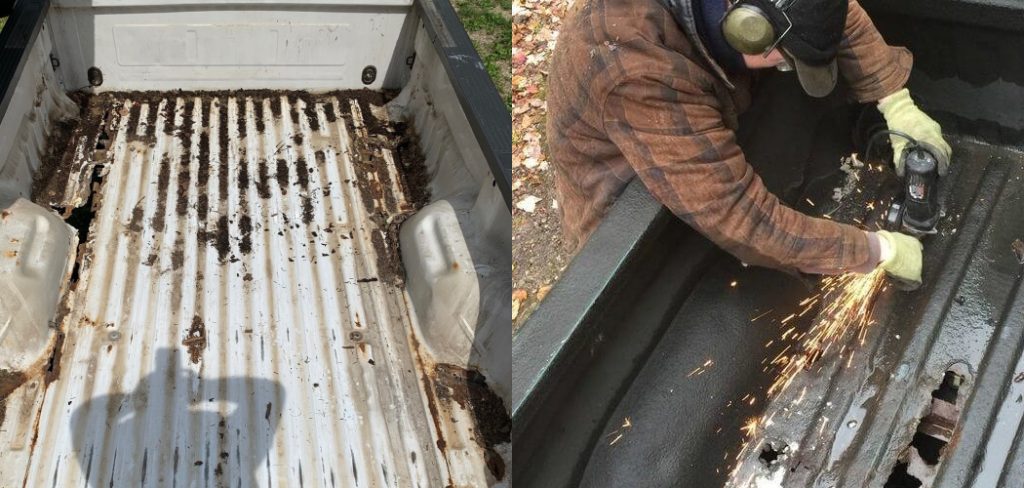
What Is a Rusted Truck Bed Floor?
A rusted truck bed floor is a truck bed floor that has been damaged by corrosion. Corrosion is a type of chemical reaction that occurs when metal is exposed to oxygen and moisture. Over time, the oxygen and moisture cause the metal to break down, forming a red-brown powdery substance known as rust. Rust can damage the finish of your truck bed floor and make cleaning difficult.
In severe cases, rust can cause the floor to crumble and fall apart. If you don’t want your truck bed floor to suffer the same fate, it’s important to take action immediately. Several products on the market can help you remove rust and restore your truck bed floor to its original condition.
Why It’s Important to Fix Rusted Truck Bed Floor?
Any truck owner knows that the bed of their truck is a popular spot for cargo and that it takes a lot of abuse. Over time, the bed of the truck can become rusted and damaged. Not only does this make your truck look less than ideal, but it can also lead to serious problems down the road.
A rusted truck bed floor can cause all sorts of problems, from water damage and mold growth to weak spots that could cause structural damage in an accident. So it’s important to take care of any rust spots as soon as possible.
Not only will this improve your truck’s appearance, but it will also help prolong its lifespan.
How to Fix Rusted Truck Bed Floor Step by Step Guide
Step 1: Prep The Area
Clean off the rust with a wire brush or sandpaper. If the rust is deep, you may need to use a chemical rust remover. Be sure to wear gloves and eye protection when working with any chemicals.
Step 2: Remove The Rust With Wire Brush Wheel
Use a wire brush wheel attachment on your drill to remove any rust from the metal. You may need to use a putty knife to remove any corrosion built up in hard-to-reach places.
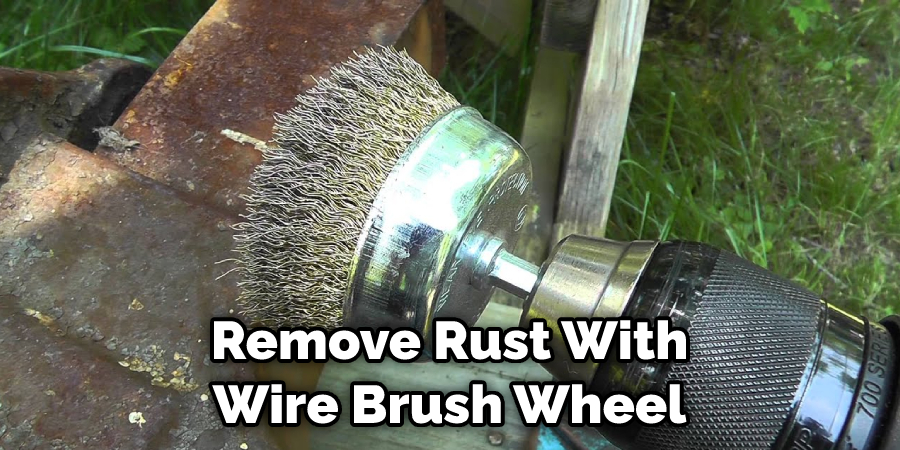
Step 3: Sand Down The Remaining Rust
Once you have removed all of the rust that you can, it’s time to sand down the remaining rust. Again, you will want to use medium grit sandpaper so that you don’t damage the metal too much.
After you have sanded down the rust, you will want to wipe down the area with a damp cloth to remove any dust.
Step 4: Wash Off The Dust & Sediment
After sanding, it’s time to remove all of the loose dust and sediment. Otherwise, this will become a new layer of grime that you’ll have to sand off later. Again, you can use a hose or pressure washer for this step.
If you’re using a hose, make sure to direct the flow of water at an angle so that you don’t cause any further damage to the metal.
Step 5: Use A Chemical Rust Remover Or Rust Restorer
If you find rust still present, you can try using a rust remover or rust restorer. Be sure to follow the instructions carefully and wear gloves and eye protection when working with chemicals. Sometimes rust can be removed with a rust remover or rust restorer, but other times it may require the use of a chemical rust remover or rust restorer. It is important to read the instructions carefully and follow them precisely to avoid any damage to your equipment.
Step 6: Weld Any Needed Patches & Paint The Truck Bed
If there are holes in your truck bed’s metal, now is the time to weld them shut. Once you have finished welding, use a metal primer and paint to touch up the areas you worked on. This will help to protect the metal from rusting in the future.
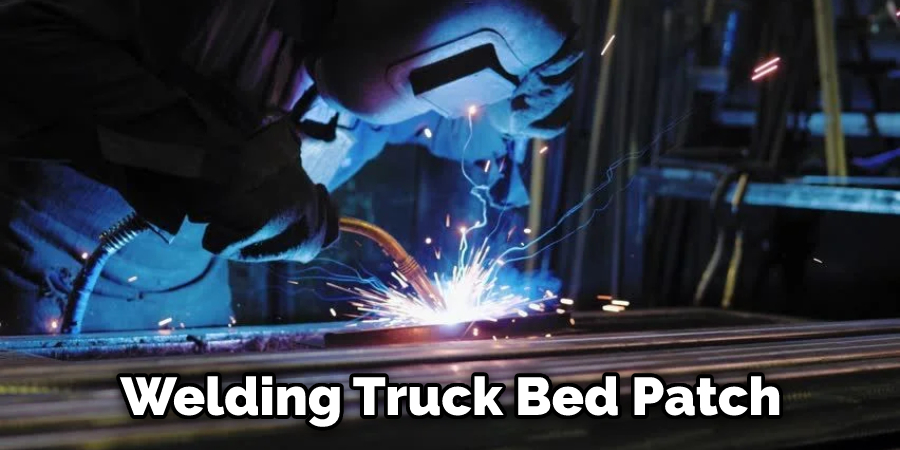
Step 7: Apply Body Filler
If there are any large dents or holes in your truck bed, don’t worry! You can fill them in with body filler. Simply apply the filler to the area using a putty knife or your fingers, and then smooth it out. Allow the filler to dry completely before proceeding to the next step.
Step 8: Sand The Patch Down Smooth
After the body filler has dried, you’ll need to sand the patch down until it’s smooth. You can use a palm sander for this or do it by hand with a piece of sandpaper. Just make sure that the surface is nice and smooth before moving on to the next step.
Step 9: Apply Primer
Once the area is smooth, apply a layer of primer to help the paint adhere better. You can use a brush or a roller for this. Make sure to follow the manufacturer’s instructions on applying the primer.
Step 10: Paint the Area
Once the primer is dry, you can paint the area with rust-resistant paint. Be sure to read the instructions on the primer and paint cans before beginning this step. You will likely need to apply two coats of paint to achieve full coverage. Allow the first coat of paint to dry completely before applying the second coat.
If your truck bed is made of aluminum, you can skip the primer and paint it with rust-resistant paint.
Step 11: Add A Protective Coating
After the paint has dried, you can add a clear coat or other protective coatings to help extend the paint job’s life. Be sure to follow the manufacturer’s instructions when applying this coating.
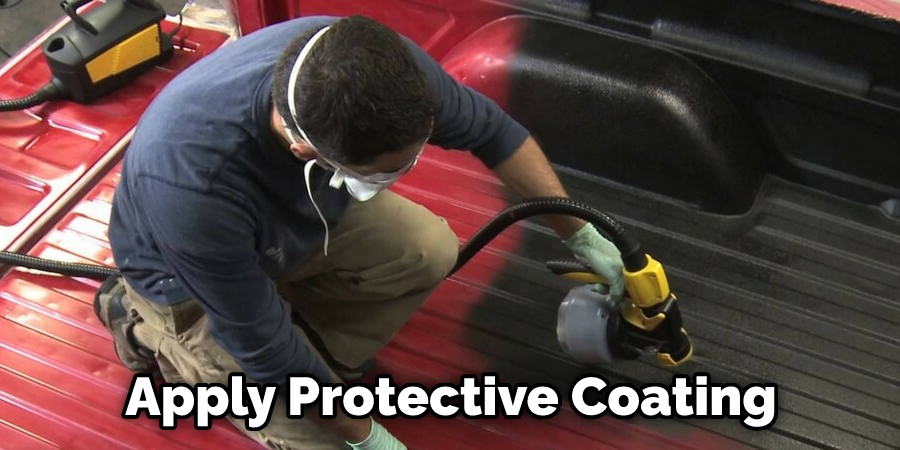
Now that you know how to fix rusted truck bed floor, you can keep your truck looking its best for years to come. Just be sure to perform this maintenance regularly so that the rust doesn’t have a chance to take hold.
Causes of Rust on Truck Beds
Rust is one of the most common problems facing truck owners today. Not only does it cause unsightly cosmetic damage, but it can also lead to serious structural issues if left unchecked. Rust is caused by a reaction between iron and oxygen, and the process is accelerated by moisture and salt.
Truck beds are particularly susceptible to rust because they are constantly exposed to the elements. To prevent rust, it’s important to regularly clean and waxes your truck bed. You should also try to keep it as dry as possible, and if you live in a cold climate, you may want to invest in a bed liner.
By taking these simple steps, you can keep your truck bed looking great for years.
How to Identify Rust on A Truck Bed Floor
Rust on a truck bed floor is not only unsightly, but it can also lead to serious problems down the road. If left unchecked, rust can eat through the metal, causing structural damage and potentially risking your safety. Fortunately, there are a few simple ways to identify rust so that you can take action before it does serious damage.
One of the most obvious signs of rust is reddish-brown staining on the surface of the metal. This is caused by the reaction of iron and oxygen in the presence of water. Another common sign of rust is the formation of small pits or cracks in the metal. As the metal oxidizes, it becomes brittle and flakes away, leaving these telltale signs behind.
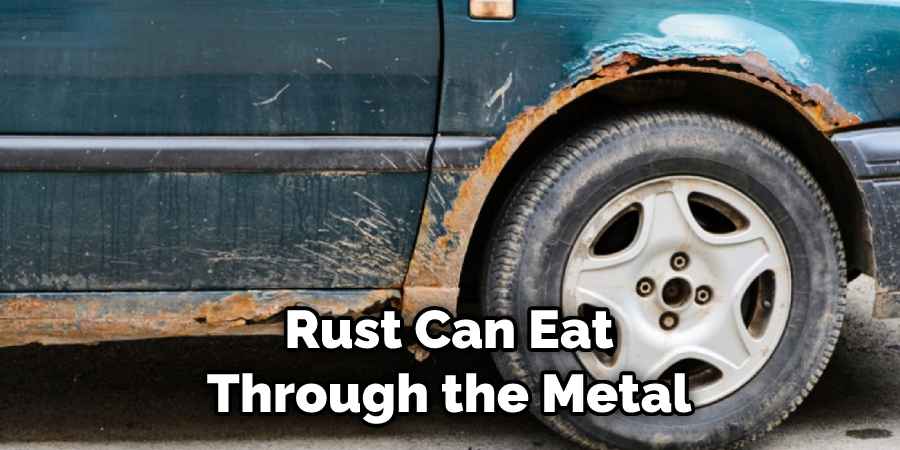
If you suspect that your truck bed floor has rust, it’s important to have it inspected by a professional as soon as possible. With proper treatment, rust can be removed, and your truck bed floor can be returned to its original condition.
How to Seal a Truck Bed Floor Against Future Rust
Sealing your truck bed floor is important to protect it against rust. Rust can cause serious damage to your truck and can be expensive to repair. Fortunately, there are a few simple steps you can take to seal your truck bed floor and prevent rust.
First, clean the surface of the truck bed floor with a degreaser or soapy water. Next, sand the floor’s surface to rough it up and create a better surface for the sealant to adhere to. Then, apply a thin sealant layer to the floor using a paintbrush or roller. Be sure to apply the sealant evenly and smoothly.
Finally, allow the sealant to dry completely before using your truck. By taking these simple steps, you can safeguard your truck against rust and extend its lifespan. Keep reading for more information about how to fix rusted truck bed floor.
How to Stop Rust from Spreading on Your Truck Bed Floor
Nothing puts a damper on a road trip like finding your truck bed covered in rust. Fortunately, there are some easy ways to prevent rust from spreading on your truck bed floor. First, make sure to clean your truck bed regularly. This will remove any dirt or debris trapping moisture and causing rust.
Second, invest in a good quality truck bed liner. This will create a barrier between your truck bed and the elements, helping prevent rust. Third, if you notice rust starting to form, use sandpaper or a wire brush to remove it as soon as possible.
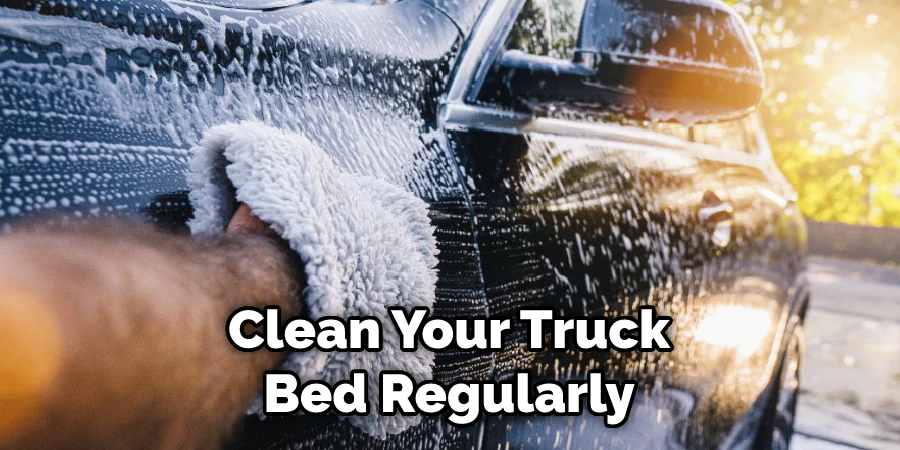
By taking these simple steps, you can help keep your truck bed looking good as new for years to come.
Prevention Tips for Avoiding Rust on Your Truck Bed
Rust is the enemy of any truck owner. Not only does it make your truck look old and worn, but it can also lead to serious structural damage if left unchecked. Fortunately, there are a few simple steps you can take to help prevent rust from taking hold of your truck bed.
First, regularly wash your truck bed with soap and water. This will help remove any dirt or debris trapped beneath the paint, causing the metal to rust. Second, apply a coat of wax to the bed of your truck. This will provide a barrier against moisture and environmental contaminants.
Finally, if you do notice any rust starting to form, take action immediately. Use a wire brush to remove the rust spots, then apply a rust-resistant primer before repainting the affected area.
By following these simple tips, you can help keep your truck bed looking like new for years to come.
What Can I Use to Fix a Rusted Truck Bed Floor?
A truck bed floor can take a beating. It’s constantly exposed to the elements and is often used as a workspace, leading to scratches, dents, and other damage. Over time, this damage can start to rust. If you’re facing a rust problem, there are a few things you can do to fix.
First, use a wire brush to remove any loose Rust-Oleum paint or powder coating. Next, apply a Rust-Oleum primer with a paintbrush. Once the primer is dry, apply Rust-Oleum Truck Bed Coating with a roller. This can be done in one coat or two, depending on the thickness of the coating.
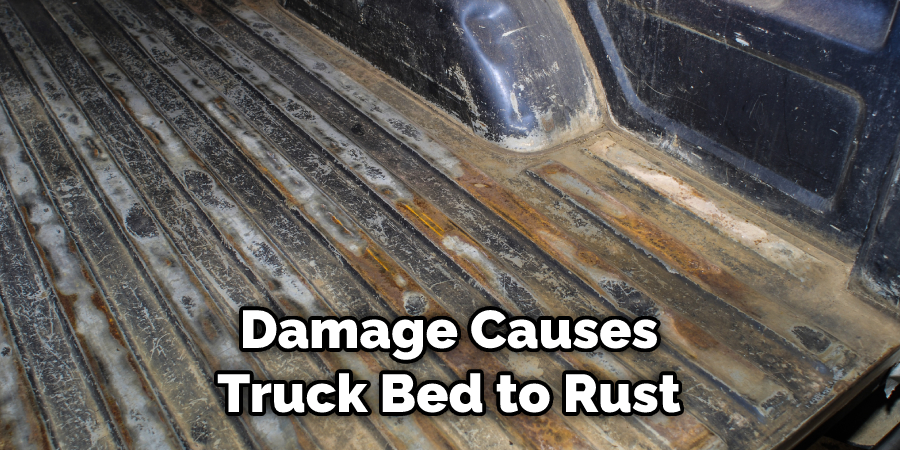
Finally, let the coating dry for eight hours before driving the truck. By following these steps, you can easily fix a rusted truck bed floor.
What Are Some Tips for Keeping My Truck Bed Floor in Good Condition?
Your truck bed takes a lot of abuse. It’s constantly being exposed to the elements and is often used as a workspace for hauling materials. As a result, it’s important to protect your truck bed floor and keep it in good condition. Here are a few tips:
- Use a Bed Liner: A bed liner will help prevent scratches, dents, and other damage. It also provides a non-slip surface, which is helpful when loading and unloading cargo.
- Clean Up Spills Immediately: Spills can cause stains and damage the finish of your truck bed floor. So, be sure to clean them up as soon as possible.
- Don’t let Debris Accumulate: Debris can hold moisture, leading to rust and corrosion. So, be sure to sweep or vacuum your truck bed regularly.
Following these simple tips will help you keep your truck bed floor in good condition for years to come.
Frequently Asked Questions
Do You Fix a Rust Hole Without Welding?
There are a few ways to fix a rust hole without welding, but the most common is to use caulk. You can also use metal frame repair foam or silicon sealant in place of caulking. If you choose this route, be sure to wait until the area has dried completely before painting or varnishing so that the paint or sealant doesn’t adhere too tightly and cause further damage.
Does Wd-40 Remove Rust?
WD-40 is a popular all-purpose cleaner and degreaser that is often used to clean rust and other contaminants from metal surfaces. According to many online reviews, WD-40 generally does an effective job of removing rust and other corrosion from metal surfaces. However, it is important to note that WD-40 is not a recommended product for use on electrical equipment or other sensitive items.
Is It Worth Fixing Rust on a Truck?
Rust is a common problem on trucks that can often be fixed with a coat of rust-proof paint. Depending on the severity, this job may only require basic tools and supplies like sandpaper and elbow grease. If you’re concerned about the long-term effects of improper painting, then it might be best to have the work done by a professional.
The benefits of having your truck’s Rust repaired include increased safety for drivers and passengers as well as decreased maintenance costs down the line. Additionally, new rust-resistant materials are becoming available that make trucks harder to damage in the first place. So if you’re at all worried about potential accidents or deteriorating equipment, fixing Rust should definitely be at the top of your list!
Can You Paint Over Rust?
Yes, you can paint over rust with a variety of paints. However, be sure to test the paint on an inconspicuous area first to make sure that it won’t cause any damage. Some of the most popular rust-proofing paints include Rustoleum’s Universal All-Purpose Paint and Chassis Black primer and finish for metal surfaces, DupliColor’s Durable Coatings for Cars (including rust protection), Krylon Brown Rustproofing Primer and Topcoat, Zinsser HD Vegetable LatexPrimer, ArmorAll Heavy Duty Metal Prep + Sealant.
Conclusion
So there you have a few ways to fix a rusty truck bed floor. If the rust is minimal, then using a wire brush and some primer should do the trick. For more severe rust damage, remove the old metal and replace it with a new piece of sheet metal. Thanks for reading our post about how to fix rusted truck bed floor. With a little bit of elbow grease, your truck will be good as new in no time!
You May Also Read: How to Fix Rust on Wheel Well Dodge Ram
